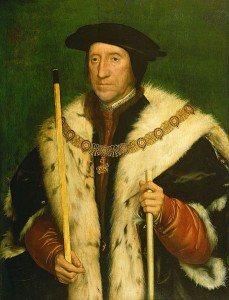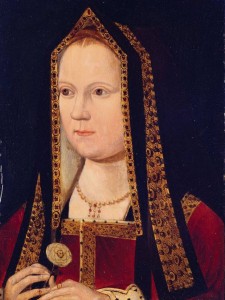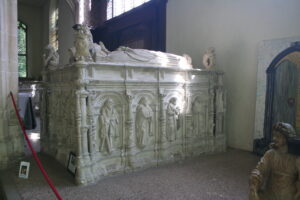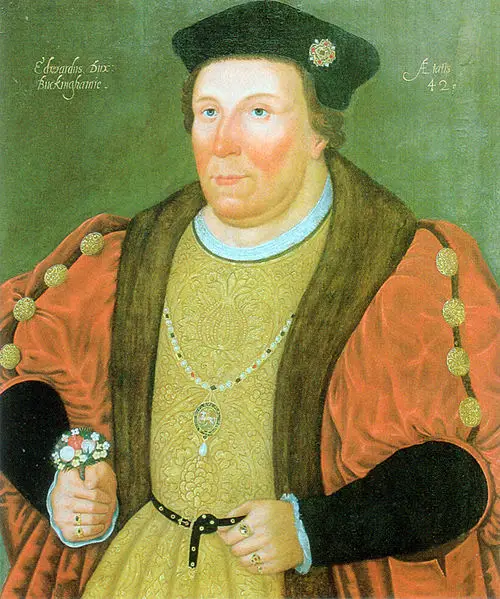 On 4th February 1495, Anne of York, daughter of Edward IV and sister of Queen Elizabeth of York, married Thomas Howard, the future 3rd Duke of Norfolk, at Westminster Abbey. But this was far more than just a romantic union—it was a strategic marriage with deep political significance.
On 4th February 1495, Anne of York, daughter of Edward IV and sister of Queen Elizabeth of York, married Thomas Howard, the future 3rd Duke of Norfolk, at Westminster Abbey. But this was far more than just a romantic union—it was a strategic marriage with deep political significance.
It was an unlikely match. Anne was the sister-in-law of King Henry VII, and Thomas Howard’s father and grandfather had fought against Henry at the Battle of Bosworth Field just ten years earlier.
So why did Henry VII allow this marriage? And what did it mean for the future of the Howard family?
Let’s find out...
Anne of York was born a princess on 2nd November 1475 as the fourth surviving daughter of King Edward IV and his queen consort, Elizabeth Woodville. Edward IV had intended a great match for his daughter, negotiating for her to marry Philip, son of Maximilian I, Holy Roman Emperor, but it fell through. Anne’s father died in 1483, leaving the throne to Anne’s brother, Edward, who was then removed by their uncle, Richard, Duke of Gloucester, who became King Richard III. Anne spent some time with her sisters and mother in sanctuary in Westminster Abbey until the king promised their safety.
It wasn’t long before Henry Tudor, who had vowed to marry Anne’s older sister, Elizabeth, returned from exile and defeated Richard III at Bosworth, claiming the throne as Henry VII. Henry and Elizabeth married in January 1486 and as the queen’s sister, Anne was a key member of the Tudor court, holding positions of honour, like First Lady of the Bedchamber to the queen, and playing key roles in the christenings of her nephew, Prince Arthur, and niece, Princess Margaret.
Anne’s sister, the queen, was keen to arrange a good marriage for Anne with an English nobleman, and her choice was Thomas Howard. Thomas, who was born in 1473, was the eldest son of Thomas Howard, 2nd Duke of Norfolk, and his first wife, Elizabeth Tylney. The Howards had a long history of service to the monarch, but the family were in the doghouse after Henry VII came to the throne because of their previous loyalty to Richard III. Thomas’s grandfather had been killed at Bosworth and his father was attainted by the new king’s first Parliament, imprisoned in the Tower of London and stripped of his titles and lands. However, he was released after showing his loyalty to Henry VII by refusing the offer of escape from the Tower during the 1487 rebellion and was restored to his earldom.As the Howards proved their loyalty, they began to rise in favour and Henry VII was happy for his nineteen-year-old sister-in-law to marry the earl’s twenty-one-year-old son – better for a woman with royal blood to marry a man set on proving his loyalty than a potential rival. The couple were given the honour of being married at Westminster Abbey followed by celebrations at Greenwich Palace. Anne was a royal princess, after all, and the queen’s sister, and the king had forgiven the Howards.
Keen to prove his loyalty to the king, Thomas fought for the Crown against the Cornish rebels and the Scots in 1497, fighting the Scots under his father’s command. He was knighted that September.
In 1509, Henry VII died and his second son inherited the throne as King Henry VIII. Thomas continued his rise in favour, being made a Knight of the Garter in 1510. The new king also granted Anne and Thomas lands in compensation for Anne’s dower rights, but sadly Anne did not live long enough to enjoy her lands. She died in November 1511 and was buried at Thetford Priory. Her remains were later moved to St Michael’s Church in Framlingham. Anne was just thirty-six at her death and her short life had been marked by personal losses – her parents, her missing brothers, and the four children she’d had with Thomas, who all died in infancy.
Anne’s death didn’t halt Thomas Howard’s rise. In early 1513, he remarried, taking Elizabeth Stafford, the daughter of Edward Stafford, 3rd Duke of Buckingham as his wife. Their children included Henry Howard, Earl of Surrey, Thomas Howard, and Mary Howard, Duchess of Richmond and Somerset. The marriage was not happy, though. Thomas took a mistress, Elizabeth Holland, and his wife accused him of locking her away, taking her jewels and physically assaulting her.
Thomas became 3rd Duke of Norfolk in 1524 and climbed to dizzying heights in royal service, being appointed as Earl Marshal and Lord High Steward, and surviving the falls of his nieces, Queens Anne Boleyn and Catherine Howard. He was, however, imprisoned and his son, Surrey, executed, in the final days of Henry VIII’s reign. He remained imprisoned during Edward VI’s reign, but was released in Mary I’s reign, serving as Earl Marshal at her coronation and then as a privy councillor and lieutenant general against the rebels of Wyatt’s Rebellion in 1554, at the age of 81! He died later that year, on 25th August and was buried at St Michael’s, Framlingham, in the same tomb as Anne, a beautiful tomb complete with effigies of the couple, which can be visited today. He’d lived through the reigns of Edward IV, Edward V, Richard III, Henry VII, Henry VIII and Edward VI, was imprisoned during Henry VIII’s reign, and survived into Mary I’s reign – what a life!
For Thomas, his marriage to Anne helped elevate his family back into royal favour, and was the beginning of an extraordinary rise that saw him serve under multiple monarchs, shape key political events, and even survive the downfall of his powerful family. For Anne, it was marriage to a man who had served her family, the Yorks, loyally, and who was now on the rise under the Tudors. But despite their grand wedding and royal connections, Anne’s life was tragically short. She didn’t live to see her husband become one of the most powerful men in England, nor did she witness the dramatic highs and lows that would define the Howard legacy.
Her tomb at Framlingham stands as a reminder of her place in history—overshadowed by those around her, but still a key figure in the story of the Tudors.





Leave a Reply